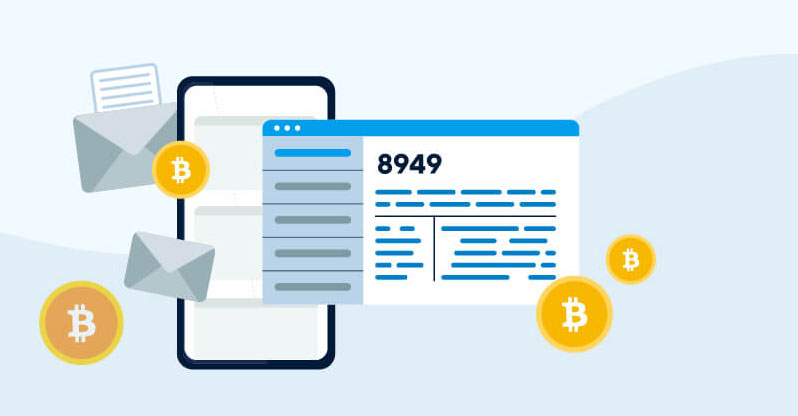Understanding the IRS Form 8949
Advertisement
Triston Martin
Oct 31, 2023
Capital asset sales and other dispositions are reported on Form 8949 to the IRS. The following are used to report on IRS:
- An unreported sale or exchange of a capital asset
- Involuntary conversions of capital assets that are not utilized in your trade or industry (other than by accident or theft)
- Bad debts owed by individuals or organizations other than businesses
- The insignificance of a safety net
- A QOF can be used to delay capital gains taxes.
- A QOF's allocation of interests
- To invest in QOZ property, a QOF files a federal income tax return as a partnership or corporation, depending on the structure chosen. New investments may be eligible for favourable tax treatment if made in a QOZ, an economically challenged community.
The Internal Revenue Service (IRS) recommends completing as many copies of Form 8949 as necessary to capture all transactions for joint returns. You can use separate forms to track which of you performed each transaction or combine them all. On your Schedule D, you'll enter the sum of all of your and your spouse's Forms 8949.
Who Uses the IRS Form 8949?

One or more forms 1099-B and 1099-S and the IRS approved alternative forms for those forms shall be filed by anybody who has received those forms and any IRS-approved substitutes for those forms. The IRS would have received those 1099s, as well as any substitutions.
The Form 1099 you've got from the brokerage should be examined carefully. There is no need to file Form 8949 if you reported all your transactions to the IRS at cost or on another basis, and no modifications were needed.
When it comes to short-term transactions, your Form 1099 should tell you whether to check Box A, B, or C; when it comes to long-term transactions, you should check Box D, E, or F. You should include this information for each transaction. If Box 2 of Form 1099 is blank and code X is in the "Applicable checkbox on Form 8949" box, you'll need to verify your records to see if the transaction was short-term or long-term.
Assets held for less than a year are considered short-term transactions, whereas assets held for more than a year are considered long-term transactions. This basic guideline isn't always applicable, of course. Whether you've owned the property, selling an inheritance or gift is always considered a long-term transaction.
Instructions to Fill in IRS Form 8949

In Part, I, select the appropriate reporting option by checking the appropriate box. It's important to keep track of your short-term capital asset sales and exchanges under reporting category 1—sales and exchanges of capital assets, such as stocks, bonds, and real estate.
If you received a Form 1099, the description of each property in column (a) of Form 8949 should be based on that information.
Columns d and e show the revenues, whereas columns g and h show the amount of the adjustment and gain or loss, respectively. After deducting the cost or other basis from the sales price, the gain or loss on each transaction is computed by adding or subtracting the appropriate adjustments.
A few examples are adjusting for stock splits that occurred before you sold a company's stock and boosting a property's basis by the value of any renovations you made. You can find detailed information on various basis increases and decreases in Publication 551, Basis of Assets.
Count the sums of each of the columns (d, e, g, and h) on line two (h). On Schedule D, put in the same numbers. If you chose Box A, you'd enter the amounts on Line 1b of Schedule D. If you chose Box B, you'll enter the sums on Line 2. If you checked box C, it should enter the corresponding sums on Line 3.
All long-term transactions that fall within one of the reporting categories should follow the same procedure as Part II. Fill in the required information for all transactions by selecting one of the boxes D, E, or F. You should fill in two and Schedule D with the same totals. If you ticked Box D, enter the amounts on Line 8b of Schedule D.
Box E's values should be entered on Line 8. If you ticked Box F, enter the sums on Line 10. In addition to the net profit or loss from your transactions, you may be required to use Schedule D to disclose the following information:
- On Form 8949, there are some transactions that you don't need to report.
- Form 2439, Notice to Shareholder of Undistributed Long-Term Capital Gains, Form 6252, Installment Sale Income, or Part I of Form 4797, Sales of Business Property, all provide evidence of a profit.
- Profit or loss from Form 4684, Losses and Gains from Section 1256 Contract and Straddles, or Form 8824, Exchanges of Like Kinds
- Partnership, S company, estate or trust profit or loss
- U.S. nonresident alien income tax returns do not include distributions of capital gains that are not directly reported on line 6 of Form 1040 or 1040-SR or indirectly reported on line 14 of Form 1040-NR.
- Transferring a loss from one year to the next in terms of tax.







